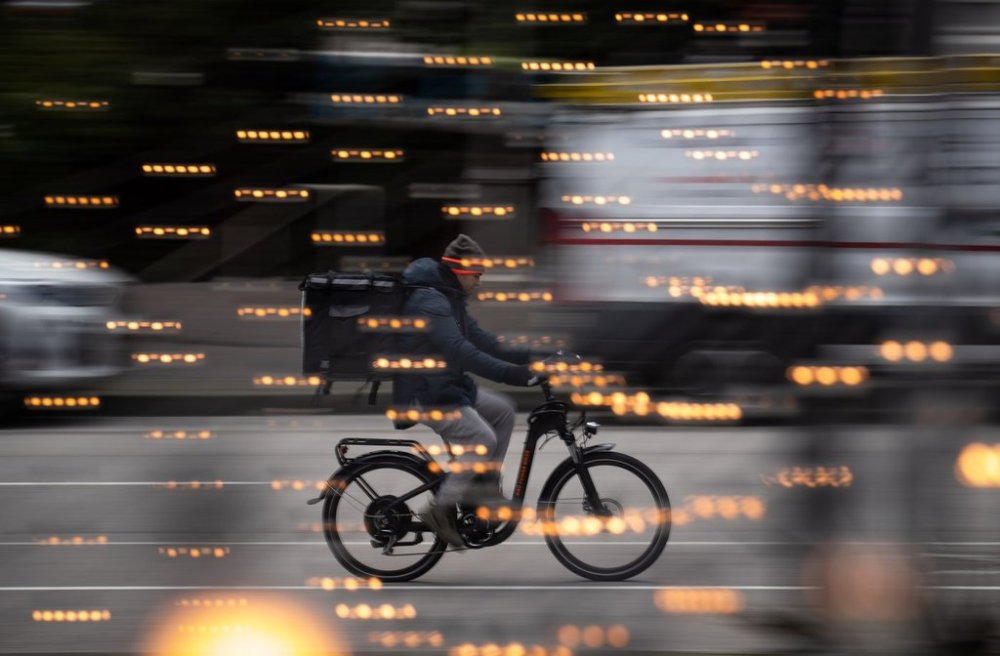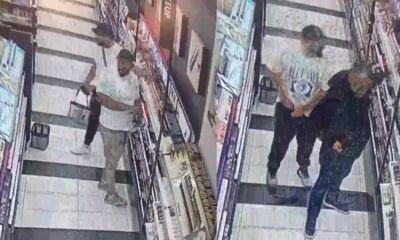Business
Delivery Apps Expand Beyond Food to Capture Retail Market

Delivery apps are evolving their business models by partnering with retail stores to diversify revenue streams. As growth in the food delivery sector begins to plateau, companies such as Skip, Uber Eats, and DoorDash are reaching beyond traditional restaurant offerings. This shift is driven by changing consumer habits and a demand for convenience that extends into various retail sectors.
According to Vince Sgabellone, a food service industry analyst at Circana, the term “food delivery apps” may no longer fully encapsulate the services these companies provide. Many of these platforms have started forming partnerships with major retailers like Dollarama, PetSmart, and Sephora. For instance, Skip rebranded itself last year to reflect its broader ambitions, dropping “The Dishes” from its name.
“Canadians are really time-starved,” noted Paul Sudarsan, senior vice-president of partnerships at Skip. With many consumers returning to office routines, the demand for items beyond food has prompted the app to expand its services, including collaborations with retailers like Shoppers Drug Mart.
Market Insights and Strategic Shifts
Sgabellone highlighted that food delivery apps are facing maturity in the restaurant sector. Deliveries currently account for approximately six percent of total traffic at restaurants, which is double the levels seen in 2019. This indicates that while food delivery remains significant, the growth rate is stabilizing.
The retail sector presents an opportunity for additional revenue. Sgabellone explained, “If they want to expand their business, that means they have to open up new channels.” For example, Uber Eats has introduced services that include convenience and personal care products, collaborating with brands like Spirit Halloween and Sephora. Similarly, DoorDash has formed alliances with retailers such as Staples Canada and Giant Tiger.
With convenience at the forefront, Sgabellone asserts that consumers prefer the instant gratification of delivery services over traditional shopping methods. “There is that instant satisfaction opportunity,” he said, emphasizing the appeal of avoiding trips to physical stores.
Changing Consumer Habits and Future Opportunities
Klaas Knieriem, head of retail for Uber Eats in Canada, stated that delivery has become a habitual part of consumer life. This shift is particularly evident among younger Canadians who have adapted to the convenience of shopping at the touch of a button.
Richard Baker, president and founder of Food Distribution Guy, pointed out that delivery apps are tapping into a potential multi-billion-dollar market by expanding their offerings. He noted that even capturing a small share of the grocery market could prove lucrative for these platforms. “That’s just going to keep growing,” he said, particularly as younger generations become parents and maintain their reliance on technology.
While large retailers typically have their own delivery systems or partnerships with companies like Amazon, Knieriem clarified that Uber Eats is not in competition with these retailers. Instead, the app’s unique selling proposition lies in its “on-demand value proposition,” offering delivery within as little as 30 minutes compared to longer wait times from other services.
Fuad Hannon, vice-president of new verticals at DoorDash, emphasized the different needs of customers using their service. “The traditional grocery order is a weekly hundred-plus-dollar run,” he explained, noting that DoorDash often caters to last-minute needs, such as picking up essential items like eggs or milk.
Delivery apps are also incorporating local businesses into their offerings, such as florists and electronics shops. Sgabellone believes that these platforms will need time to navigate the retail landscape, similar to their experience with restaurants. He noted that while using delivery apps incurs costs for businesses, they can be profitable if retailers adjust their margins accordingly.
As these delivery apps expand into retail, they are not abandoning their roots in the food sector. Knieriem remarked, “We’re not taking our foot off the gas from the restaurant market, because that’s why the app is also called Uber Eats.”
This article was originally published on October 5, 2025 by The Canadian Press.
-

 World3 months ago
World3 months agoScientists Unearth Ancient Antarctic Ice to Unlock Climate Secrets
-

 Entertainment3 months ago
Entertainment3 months agoTrump and McCormick to Announce $70 Billion Energy Investments
-

 Science3 months ago
Science3 months agoFour Astronauts Return to Earth After International Space Station Mission
-

 Lifestyle3 months ago
Lifestyle3 months agoTransLink Launches Food Truck Program to Boost Revenue in Vancouver
-

 Technology2 months ago
Technology2 months agoApple Notes Enhances Functionality with Markdown Support in macOS 26
-

 Top Stories1 week ago
Top Stories1 week agoUrgent Update: Fatal Crash on Highway 99 Claims Life of Pitt Meadows Man
-

 Sports3 months ago
Sports3 months agoSearch Underway for Missing Hunter Amid Hokkaido Bear Emergency
-

 Politics2 months ago
Politics2 months agoUkrainian Tennis Star Elina Svitolina Faces Death Threats Online
-

 Technology3 months ago
Technology3 months agoFrosthaven Launches Early Access on July 31, 2025
-

 Politics3 months ago
Politics3 months agoCarney Engages First Nations Leaders at Development Law Summit
-

 Entertainment3 months ago
Entertainment3 months agoCalgary Theatre Troupe Revives Magic at Winnipeg Fringe Festival
-

 Politics1 week ago
Politics1 week agoShutdown Reflects Democratic Struggles Amid Economic Concerns















